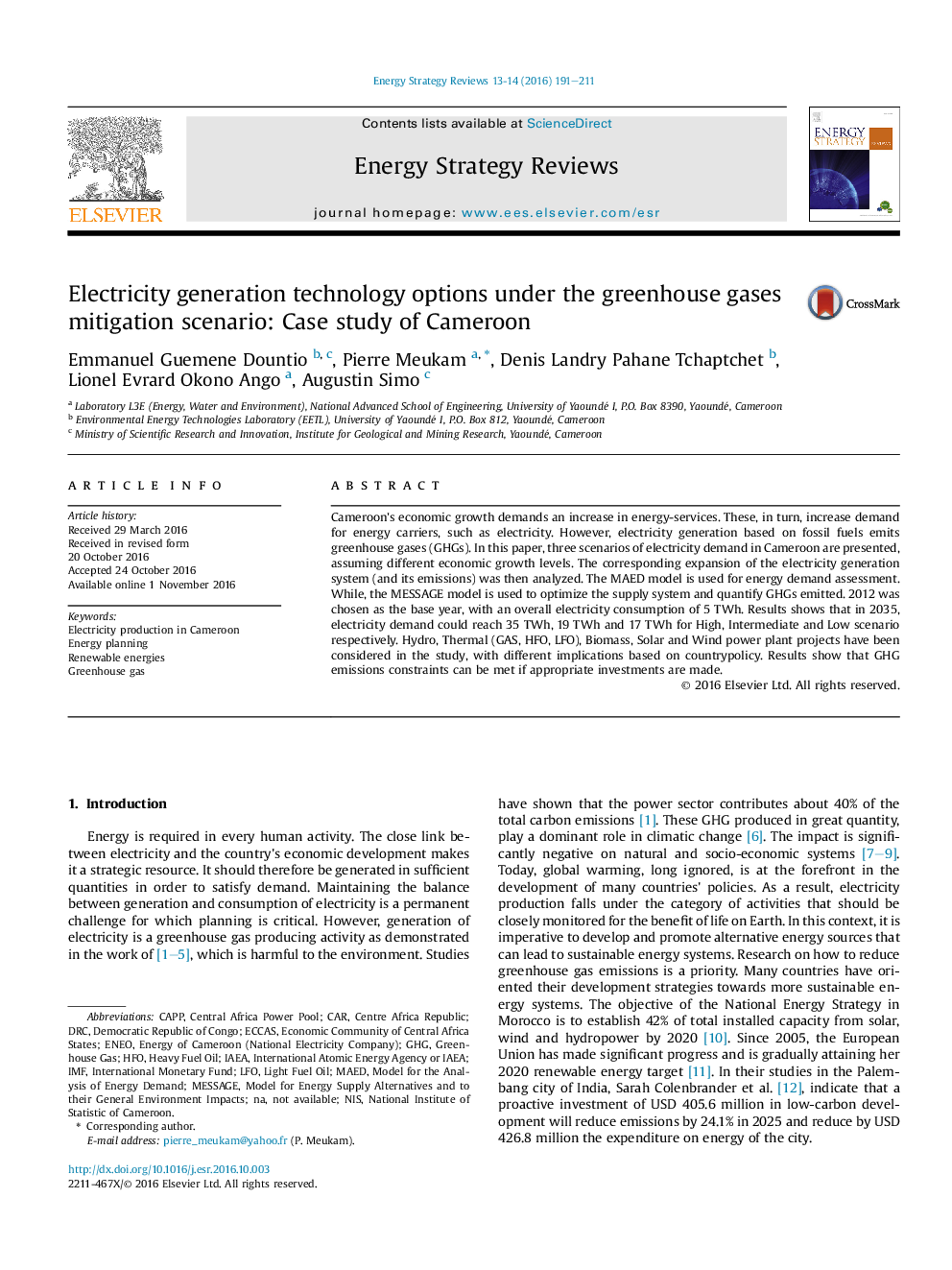| کد مقاله | کد نشریه | سال انتشار | مقاله انگلیسی | نسخه تمام متن |
|---|---|---|---|---|
| 6481315 | 1483526 | 2016 | 21 صفحه PDF | دانلود رایگان |
- Three economic growth scenarios forecasting were developed.
- Forecasted electricity demand by MAED up to year 2035 were presented.
- The energy expansion, resulting GHG emission and their cost were analyzed using software MESSAGE.
- Hydroelectricity and renewable energy sources were included as new strategies.
Cameroon's economic growth demands an increase in energy-services. These, in turn, increase demand for energy carriers, such as electricity. However, electricity generation based on fossil fuels emits greenhouse gases (GHGs). In this paper, three scenarios of electricity demand in Cameroon are presented, assuming different economic growth levels. The corresponding expansion of the electricity generation system (and its emissions) was then analyzed. The MAED model is used for energy demand assessment. While, the MESSAGE model is used to optimize the supply system and quantify GHGs emitted. 2012 was chosen as the base year, with an overall electricity consumption of 5Â TWh. Results shows that in 2035, electricity demand could reach 35Â TWh, 19Â TWh and 17Â TWh for High, Intermediate and Low scenario respectively. Hydro, Thermal (GAS, HFO, LFO), Biomass, Solar and Wind power plant projects have been considered in the study, with different implications based on countrypolicy. Results show that GHG emissions constraints can be met if appropriate investments are made.
Journal: Energy Strategy Reviews - Volumes 13â14, November 2016, Pages 191-211
